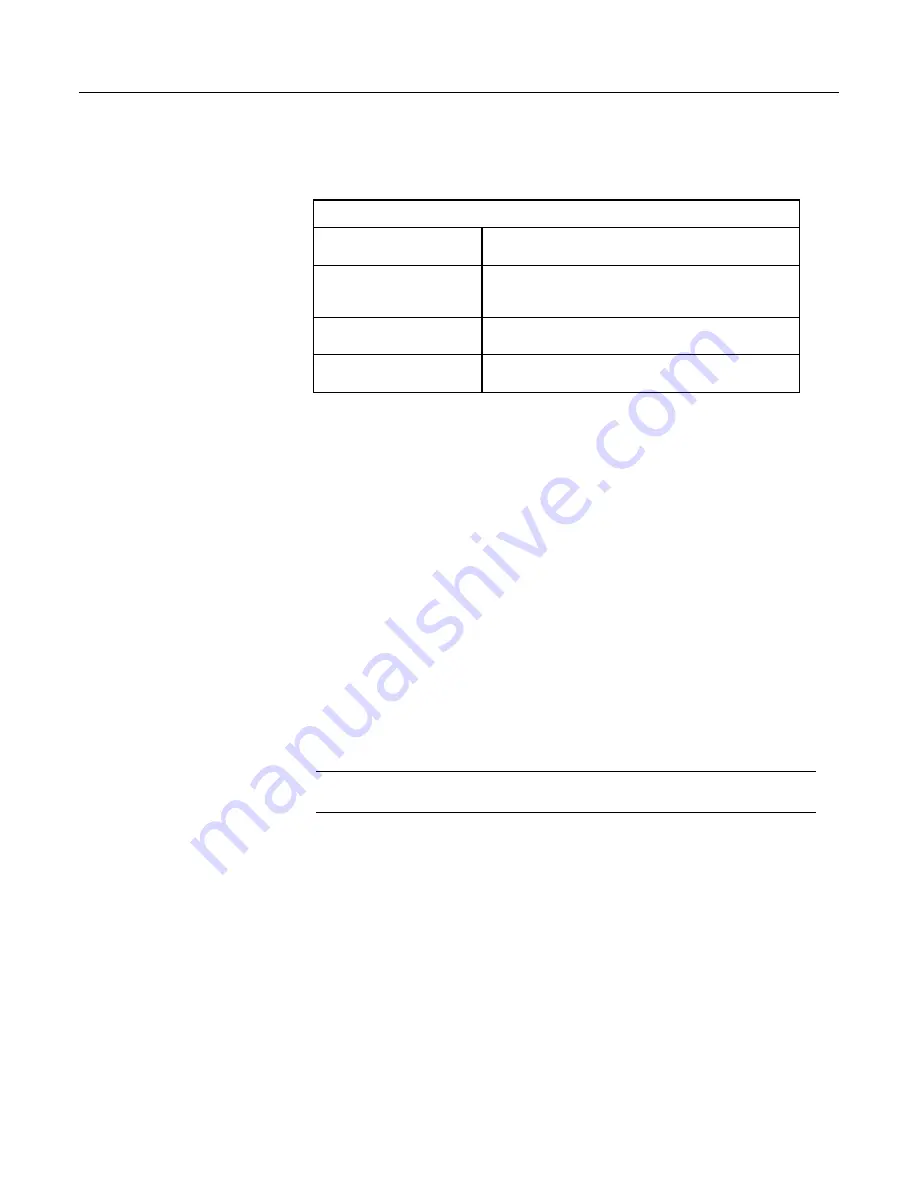
Section 7. Installation
ensure the CR1000 allocates adequate memory for each data table.
Table 16.
DataInterval()
Lapse Parameter Options
DataInterval()
Lapse
Argument
Effect
Lapse
>
0
If table record number is fixed, X data frames (1 kB per data
frame) are added to data table if memory is available. If record
number is auto-allocated, no memory is added to table.
Lapse
=
0
Time stamp and record number are always stored with each
record.
Lapse
<
0
When lapse occurs, no new data frame is created. Record time
stamps calculated at data extraction may be in error.
Scan Time and System Time
In some applications, system time (see
System Time
(p. 530)
), rather than scan time
(see
Scan Time
(p. 527)
), is desired. To get the system time, the
CallTable()
instruction must be run outside the
Scan()
loop. See section
Time Stamps
(p. 303).
OpenInterval() Instruction
By default, the CR1000 uses closed intervals. Data output to a data table based on
DataInterval()
includes measurements from only the current interval.
Intermediate memory that contains measurements is cleared the next time the data
table is called regardless of whether or not a record was written to the data table.
Typically, time-series data (averages, totals, maxima, etc.), that are output to a
data table based on an interval, only include measurements from the current
interval. After each data-output interval, the memory that contains the
measurements for the time-series data are cleared. If a data-output interval is
missed (because all criteria are not met for output to occur), the memory is cleared
the next time the data table is called. If the
OpenInterval
instruction is contained
in the
DataTable()
declaration, the memory is not cleared. This results in all
measurements being included in the time-series data since the last time data were
stored (even though the data may span multiple data-output intervals).
Note
Array-based dataloggers, such as CR10X and CR23X, use open intervals
exclusively.
Data-Output Processing Instructions
Data-storage processing instructions (aka, "output processing" instructions)
determine what data are stored in a data table. When a data table is called in the
CRBasic program, data-storage processing instructions process variables holding
current inputs or calculations. If trigger conditions are true, for example if the
data-output interval has expired, processed values are stored into the data table. In
CRBasic example
Definition and Use of a Data Table
(p. 142),
three averages are
stored.
Consider the
Average()
instruction as an example data-storage processing
instruction.
Average()
stores the average of a variable over the data-output
interval. Its parameters are:
145
Summary of Contents for CR1000
Page 2: ......
Page 4: ......
Page 6: ......
Page 32: ......
Page 36: ......
Page 38: ......
Page 40: ......
Page 60: ...Section 4 System Quickstart Figure 16 PC200W View Line Graph 60 ...
Page 96: ......
Page 98: ...98 ...
Page 302: ......
Page 453: ...Section 8 Operation Figure 115 Using the Keyboard Display 453 ...
Page 456: ...Section 8 Operation Figure 118 Real Time Custom 456 ...
Page 457: ...Section 8 Operation 8 8 1 3 Final Memory Tables Figure 119 Final Memory Tables 457 ...
Page 458: ...Section 8 Operation 8 8 2 Run Stop Program Figure 120 Run Stop Program 458 ...
Page 460: ...Section 8 Operation Figure 122 File Edit 460 ...
Page 461: ...Section 8 Operation 8 8 4 PCCard Memory Card Display Figure 123 PCCard CF Card Display 461 ...
Page 478: ......
Page 506: ......
Page 536: ......
Page 636: ......
Page 642: ......
Page 644: ......
Page 676: ......
Page 677: ......
















































